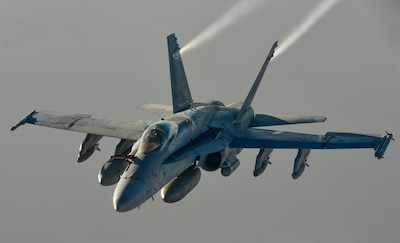By Lisa Ferdinando DoD News, Defense Media Activity
WASHINGTON, Nov. 9, 2017 — The Defense Department is
pledging to improve the way background investigations are done, according to
Garry Reid, DoD’s director for defense intelligence and security.
There is currently an enormous backlog in the
investigations, Reid said. Some personnel have been waiting up to nearly two
years for a top secret security clearance, he said, explaining the goal for
completing a top secret investigation is 80 days.
The delays are impacting readiness, he explained to DoD
News.
“Units are deploying without a full complement of cleared
intelligence analysts and technical experts,” Reid said.
“Service members competing for positions that require top
level clearances are held in check,” he said. “Our research and development
programs are not operating at capacity due to shortage of cleared defense
industry contractors.”
The long delays in processing clearances result in loss of
talented people, particularly those just entering the workforce who have highly
desired technical skills but cannot afford to wait a year or more before
starting the job, he said.
“We are prepared to take this matter in hand and
aggressively develop better approaches that can deliver quality investigations,
at sustainable cost, within acceptable timelines,” he said.
Changes in Procedures
The fiscal year 2017 National Defense Authorization Act,
Section 951, Enhanced Security Programs for Department of Defense Personnel and
Innovation Initiative, directed the defense secretary, to provide the following
to the DoD committees:
-- An implementation plan, by Aug. 1, 2017, for the Defense
Security Service, or DSS, to conduct, after Oct. 1, 2017, background
investigations for DoD personnel, whose investigations are adjudicated by the
DoD Consolidated Adjudications Facility.
-- A report, by Aug. 1, 2017, on the number of full-time
equivalent employees of the DoD management headquarters that would be required
by DSS to carry out the transfer plan.
-- A plan, by Oct. 1, 2017, along with the Office of
Personnel Management, to transfer government investigative personnel and
contracted resources to the DoD from OPM, in proportion to the background and
security investigative workload that would be assumed by DoD if the
implementation plan were executed.
Backlog Impacts Readiness
DoD does not plan to assume the cases the OPM is already
investigating, according to Reid. The pending cases are in various stages of
completion and the department has already paid OPM’s National Background
Investigation System to conduct those investigations.
“The enormity of the backlog is staggering,” Reid told
members of Congress last month.
The backlog hurts readiness, erodes warfighting capacity,
debilitates development of new capabilities, and wastes taxpayer dollars, he
explained to the House Oversight and Government’s Subcommittee on Government
Operations.
He said 93,000 DoD cases were waiting in a queue for a top
secret investigation, and the prices for the investigations continue to rise at
a “staggering rate.”
“In 2015, after promising to provide credit monitoring to 22
million government employees and federal contractors whose personal data was
compromised, OPM retroactively passed on these costs on to its customers --
resulting in an additional $132 million bill for DoD,” he said.
DoD to Reset Process and Procedures
Reid said the situation is “unacceptable and must be
remedied through immediate mitigation measures and a long-term reformation of
the personnel vetting system.”
He said that is why Congress directed DoD in 2017 to develop
plans for assuming control of the background investigations.
In August, the defense secretary approved the plan and
notified Congress, the director of national intelligence, the director of OPM,
and the director of the Office of Management and Budget of his intent to
execute the plan over a three-year period, according to Reid.
“The DoD plan goes far beyond a transfer of personnel and
resources associated with the legacy process at OPM; this will be a full
resetting of process and procedures in desperate need of modernization and
system reform,” he said.







